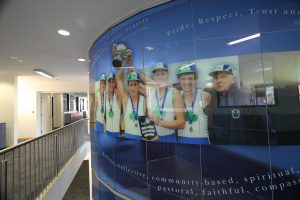Laurie Larmer’s story
Laurie’s redemption
One of St Patrick’s College’s greatest ever war heroes used the 70th anniversary of the end of World War II to embark upon a remarkable story of forgiveness and redemption.
Here we share the incredible life story of Laurie Larmer (SPC 1935-40)
Biography
Laurie Larmer was a day student at St Patrick’s College.
In 1936 he was the recipient of special distinction for the Sub-Intermediate class and was the cox in one of the SPC House crews, which came third in the first heat. In 1938 he received an Honourable Mention in the SPC Elocution contests.
In World War II Laurie was a bomber pilot for the RAAF operating under the jurisdiction of the RAF in England.
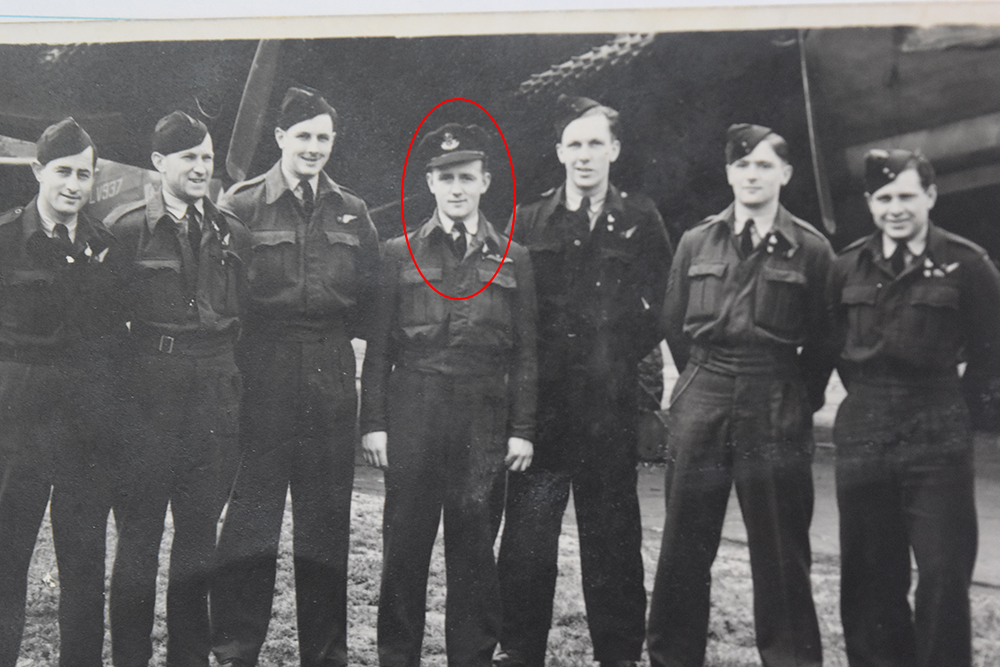
He flew on several missions over Germany in 1945.
In the space of four weeks in March and April of that year, Laurie piloted missions to bomb nine separate German cities including Dortmund, Hagen and Heligoland.
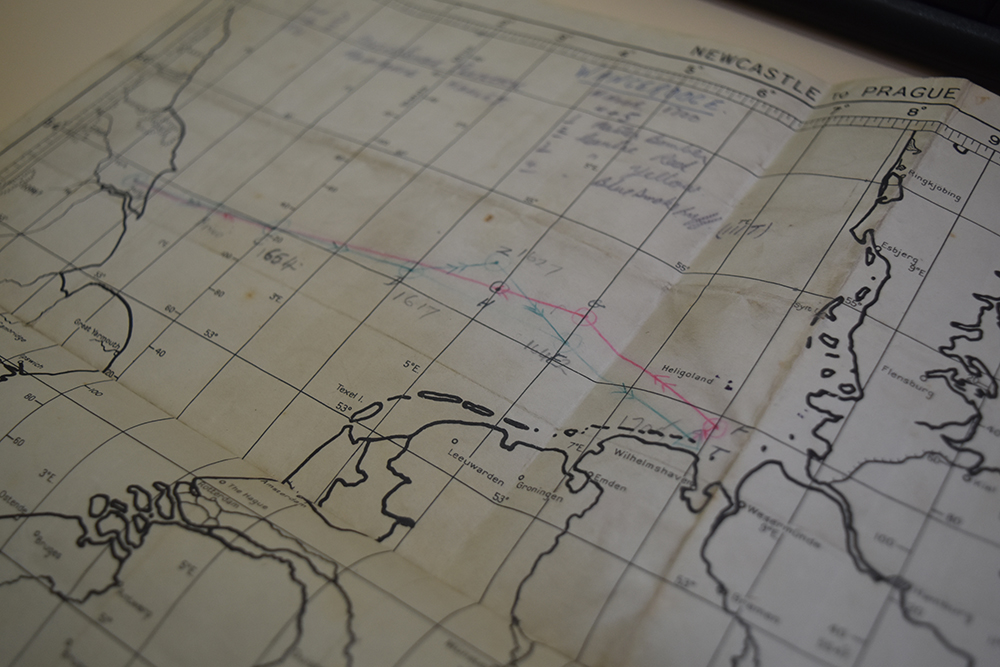
Click on the following links to see amazing pictures of Heligoland immediately before the bombing, during the bombing, immediately after the bombing, and today.
At the end of hostilities in Europe, he commenced training for the war in the Pacific. This conflict ended before he had the opportunity to fly against the Japanese. Before returning to Australia he was seconded to assist with the processing (and transporting) of POWs. He returned to Australia in December 1945, and was discharged in early 1946.
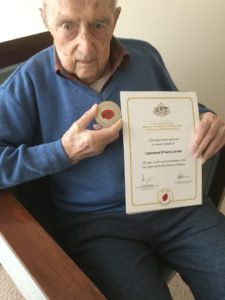
Laurie Larmer is pictured with the medal he received in 2020 to mark the 75th anniversary since the end of World War II.
After a short stint at Melbourne University studying law, Laurie then embarked on a career in the motoring industry working first in vehicle distribution for the Rootes Group in Fishermen’s Bend before transferring to work in dealer development for Chrysler in the 1950s.
After the collapse of Chrysler, Laurie joined a Ford dealership in Melbourne where he worked for eight years before entering the hotel business, working as the licensee at the former Athletics Club Hotel in Mair St, Ballarat (now known as the Foundry Hotel).
In 1985 Laurie purchased the freehold of the Courthouse Hotel in Sydney Rd, Brunswick which he maintained until retirement in 1997.
Laurie married Pauline Fitzgerald in 1949 and together they had three daughters – Anne, Bernadette and Margaret.
In 2014 Laurie was guest speaker at our Old Collegians lunch on St Patrick’s Day, regaling the audience with many humorous stories and then, in 2015, Laurie was inducted as a Legend of St Patrick’s College.
Expressing sympathy
Soon after that induction, Laurie was further thrilled when he was presented with the highly regarded French Legion of Honour Medal in recognition of his bravery flying bomber planes over enemy territory.
Of the 10,000 Australians who flew in Bomber Command during World War II, 3500 were killed in action.
Laurie was one of 106 Australian war veterans in 2015 to be presented with France’s highest military honour.
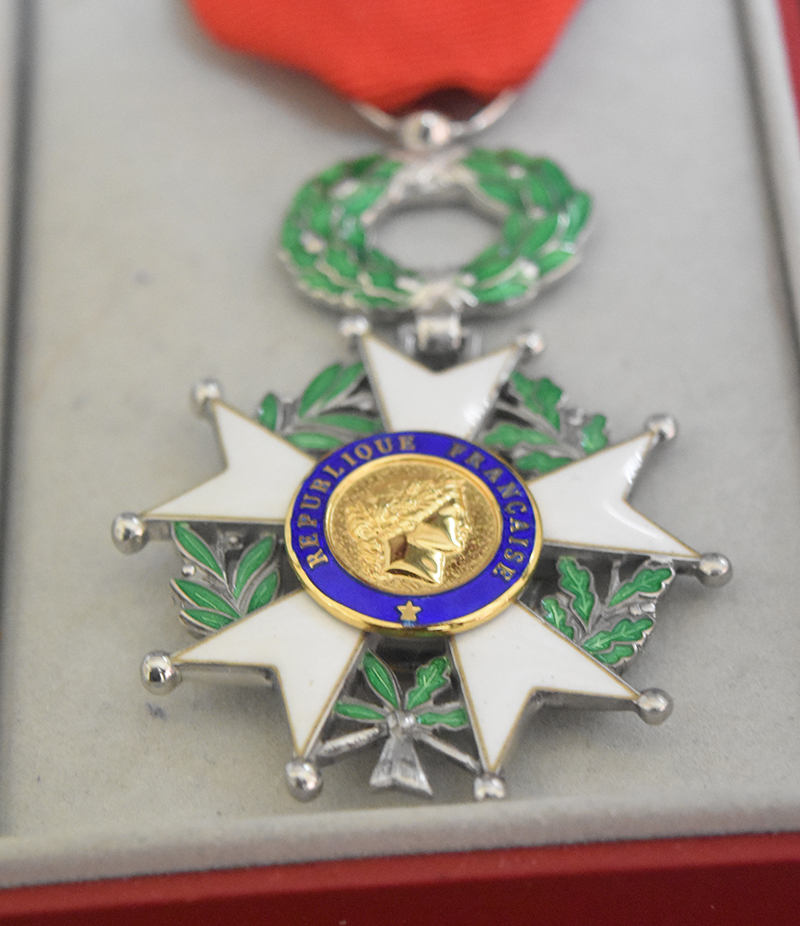
This acknowledgment, coming in conjunction with the 70th anniversary of Laurie’s sorties over Germany provoked a period of reflection for Laurie.
“I got to thinking, how would it be if while I was in England and the Japs had been over to bomb Melbourne – they probably would have killed my mother and father,” Laurie said.
“Well, I killed a lot of German people – innocent civilans, men, women and children.
“I thought I’d write to those cities that I bombed just to express my sympathies and I wrote the letter.”
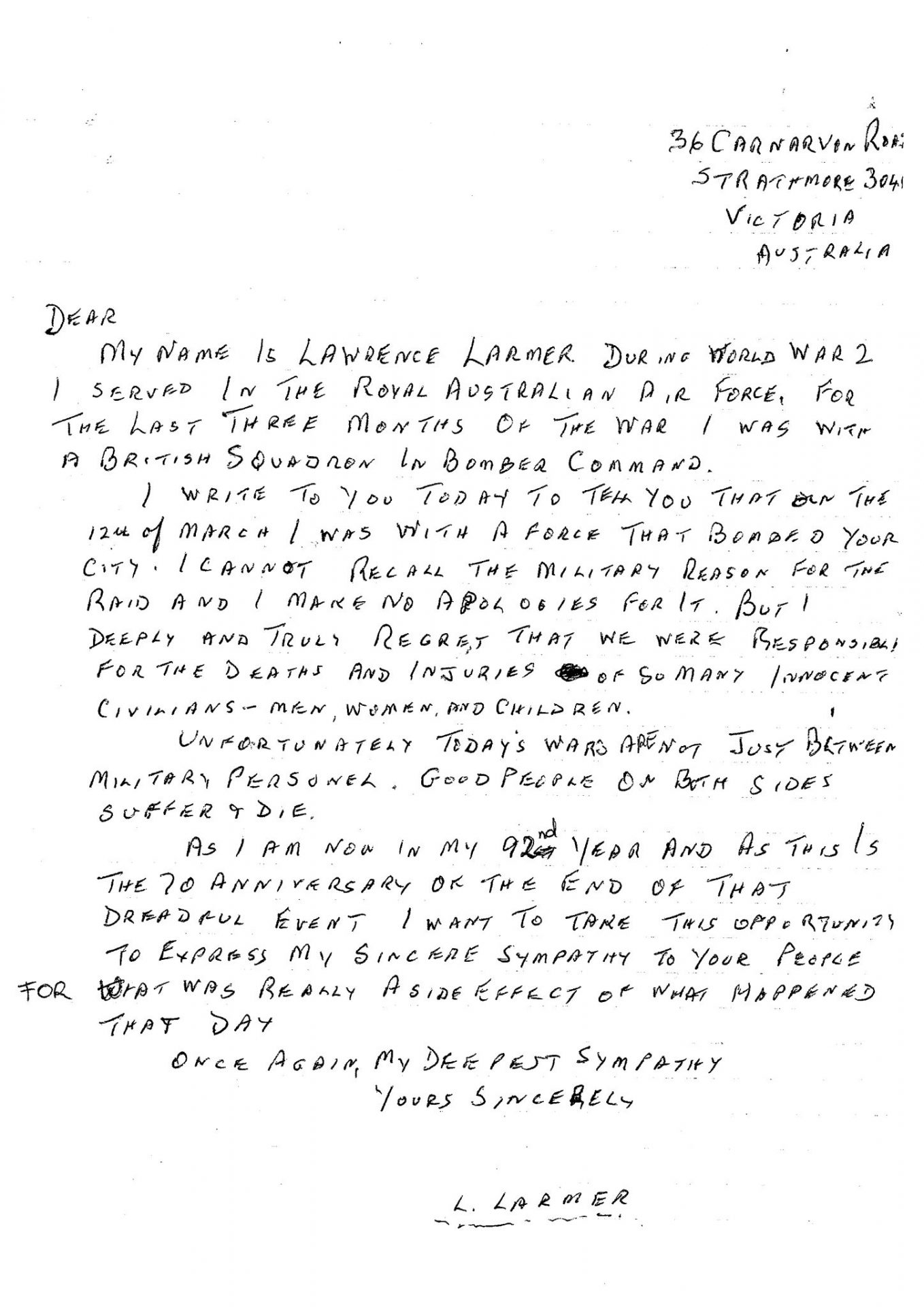
Laurie then consulted with the German Consul General in Melbourne who, upon immediately realising the significance and emotion behind such a gesture, referred it to Canberra for the attention of the German Ambassador to Australia.
“He (the Consul General) gave us a contact at the Embassy who turned out to be the Military Attache, and he was very good – wonderful,” Laurie said.
“He sent me an email which said he’d shown my letter to the Ambassador who said he would like to send it with a covering letter from himself.
“He also asked if he could send the same letter to the Australian Ambassador in Berlin and to the Australian War Memorial. A couple of weeks later he sent another email to say those letters had gone.”
The German Ambassador helped identify the mayors and civic leaders from nine separate German cities and towns which Laurie had bombed from above during those turbulent final weeks of World War II.
They included places such as Dortmund, Wuppertal, Homburg, Hagen, Boizenburg, Heligoland, Wangerooge, Beyreuth and Travemunde.
Much to Laurie’s amazement, five of the leaders of these cities have now replied with moving letters of their own.
“This is the important part of it – the fact that there are responses, it’s not about what I wrote or what I did,” Laurie said.
“The important thing is the beautiful responses that these German people sent to me.
“Their kindness – what came through is that they understand that I was just a soldier following orders.”
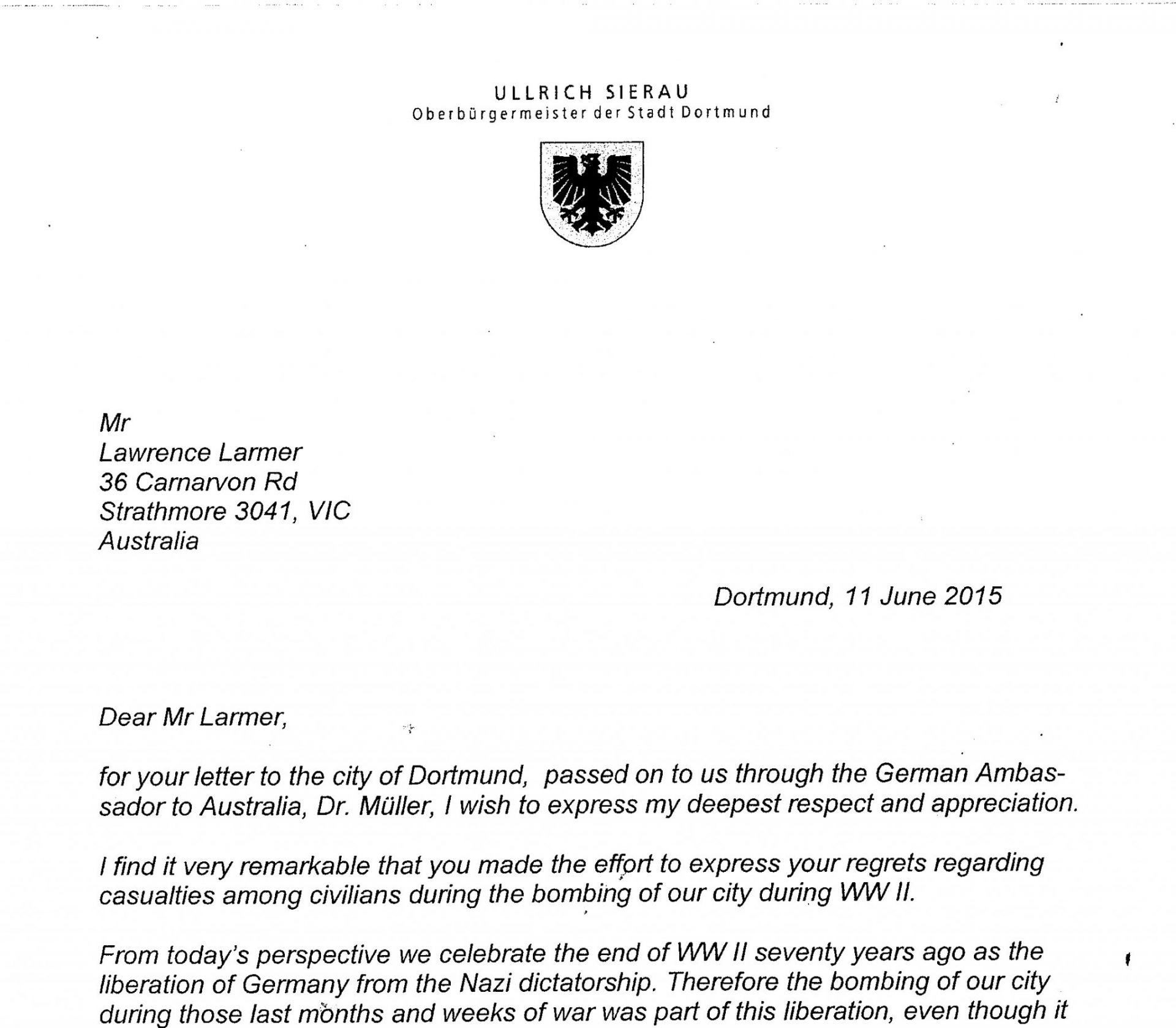
Above is an excerpt from a letter from the Mayor of Dortmund
Read the letter from the Mayor of Wangerooge here.
Read the letter from the Mayor of Boizenburg here and here.
Read the letter from the Mayor of Hagen here and here.
Read the letter from the Mayor of Dortmund here and here.
Importantly for Laurie, the letters he sent did not just remain within the confines of each town’s City Hall – rather they were read out to school children, shared with local historians and passed on to German media.
“It was very extensively covered in Germany from what I’ve been told,” Laurie said.
It also attracted the attention of media in Australia with the ABC featuring a report on Laurie’s cross-continental communication.
Laurie’s story was also featured as the focus of a Leunig cartoon in The Age.
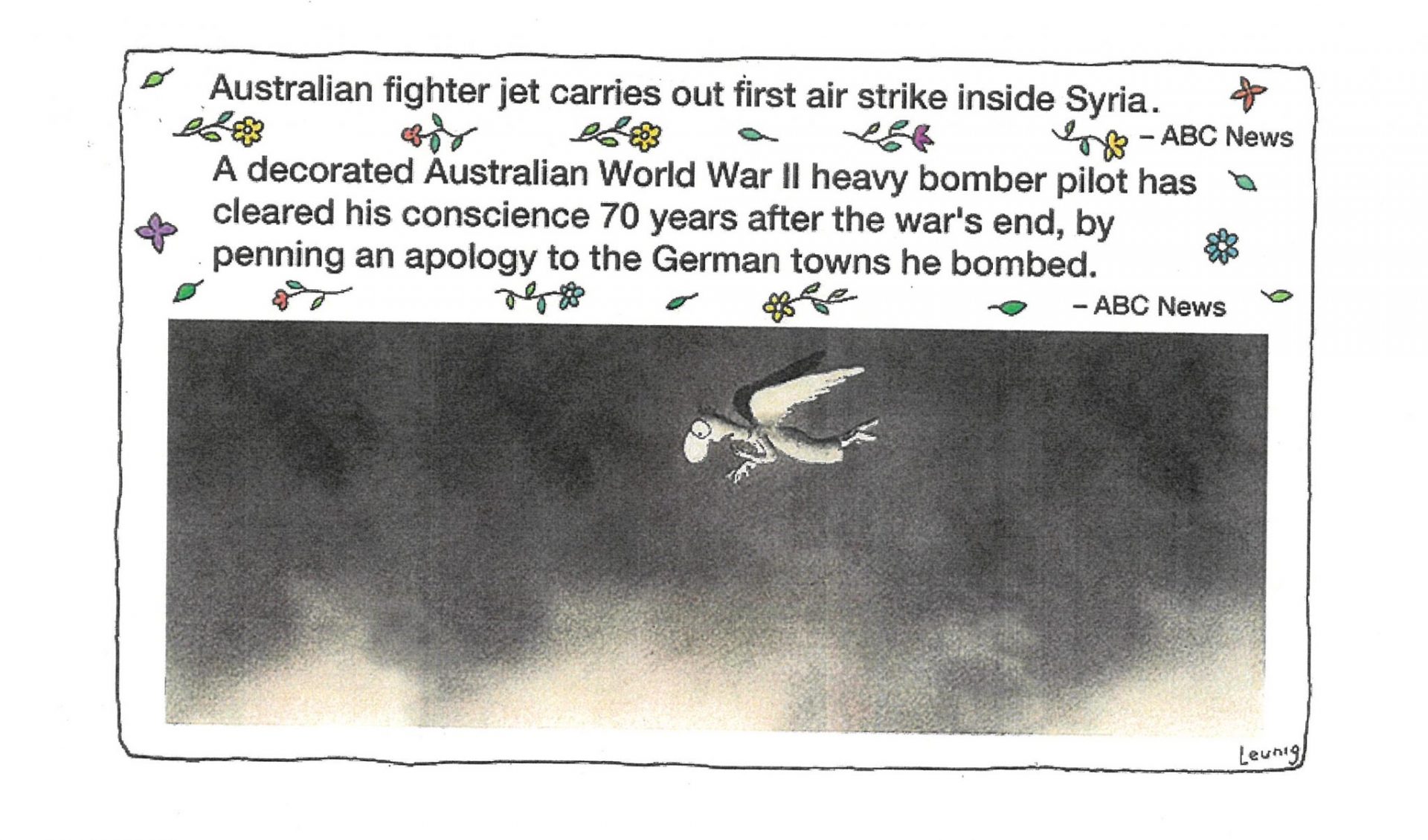
Laurie was also thrilled to receive a from the German Defence Attache in Australia, Mr Carsten Knorr.
The two have since met in person, forming close bonds between former enemies.
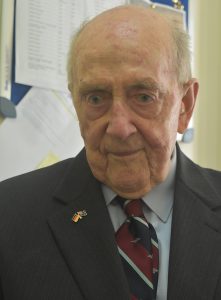
“I met with him in Canberra (at the German Embassy) … and as I was going he put his arms around me and gave me a hug,” Laurie said.
Laurie’s legacy will now live on in two countries.
In honour of his efforts in reaching out to victims of war, St Patrick’s College will create a prominent archival display featuring Laurie’s life story to stand as an example of greatness to today’s students.
Lest we forget.
